1. Rubik’s Cube
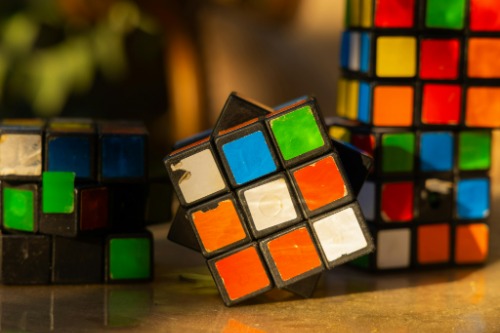
The Rubik’s Cube is a puzzling classic that many American kids tried their hands at during the ‘80s and beyond. The colorful, twisty cube was a true test of patience and problem-solving skills, with kids spending hours trying to align all the colors. It wasn’t just a toy; it was a challenge that, for some, became a way of life, Thomas Davis explains in Medium. The Rubik’s Cube also found its way into popular culture, as it became synonymous with intelligence and perseverance.
Though its popularity dipped, the Rubik’s Cube has never truly disappeared. In fact, it’s experienced a resurgence as more and more people seek brain-teasing activities. While it’s no longer as omnipresent as it once was, the Rubik’s Cube still enjoys a cult following among those who love the mental challenge it provides.
2. Tamagotchis
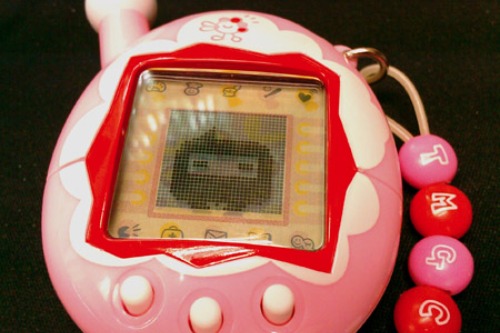
Tamagotchis, those tiny digital pets, were practically a rite of passage for kids in the late ’90s and early 2000s. These handheld devices required constant attention, feeding, and cleaning to keep your virtual pet alive. If you didn’t take care of your Tamagotchi, it would “die,” leading to frantic attempts to revive it. The Tamagotchi became a symbol of digital interaction long before the smartphone era, teaching kids about responsibility in a quirky way, according to Sebastian Skov Andersen from WIRED.
So, where did they go? Like many trends, the Tamagotchi craze eventually lost steam as new forms of entertainment emerged. Kids moved on to other digital distractions like cell phones and video games, leaving the once-ubiquitous toys behind. Yet, Tamagotchis have had sporadic comebacks, hinting that their charm is something that never fully fades.
3. Beanie Babies
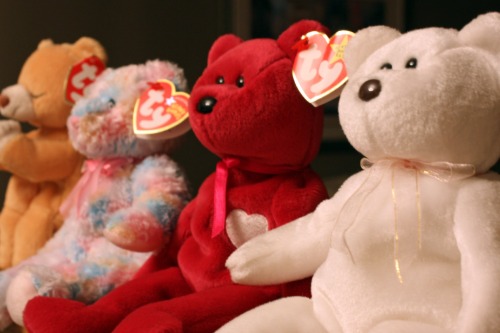
Every American kid had at least one Beanie Baby, and some kids had dozens, hoping for that rare collectible. These little plush animals were filled with beans and came with a tag that detailed their “birth” date and a name, Brittany Stephanis and Robert Leslie explained in Business Insider. Beanie Babies were marketed as a way to “collect them all” and, at the height of their popularity, people were convinced they were valuable investments. The rarity of certain Beanie Babies made them highly sought after, with some selling for hundreds or even thousands of dollars.
Unfortunately, the Beanie Baby bubble burst by the late ’90s. As the market became flooded with more and more Beanie Babies, their value dropped sharply. But for a time, it seemed like you couldn’t go anywhere without seeing a collection of them, whether in a toy store or someone’s living room. Nowadays, they mostly live in basements or attics, relics of a short-lived toy mania.
4. Pogs
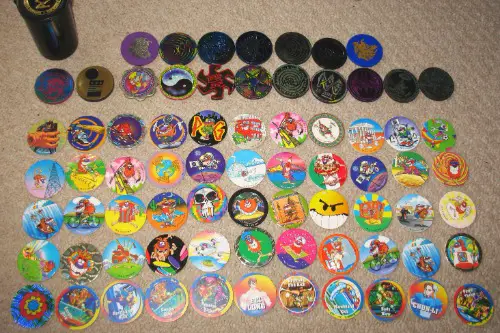
Pogs were the ultimate collectible craze in the ‘90s, and every kid seemed to have a stack of them. The circular cardboard discs came in different designs and were traded like prized possessions on playgrounds across America. Kids would use a heavier, thicker pog called a “slammer” to stack and knock over the piles, competing for the prized pogs. While the game had roots in Hawaii, it became a nationwide phenomenon almost overnight and sparked countless after-school tournaments, according to Zachary Petit from Fast Company.
So, why did they vanish so quickly? After a brief but intense period of popularity, the pog craze faded as quickly as it had arrived. Perhaps it was because the game itself wasn’t as engaging as it seemed at first, or maybe the appeal of collecting just wore off. But whatever the reason, pogs faded into obscurity, leaving behind only nostalgic memories for those who played.
5. Silly Putty
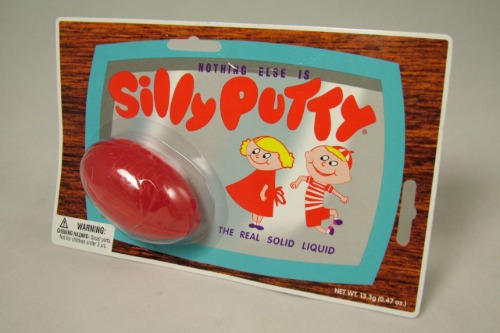
Silly Putty was a strange, stretchy, bouncy, and squishy toy that could do some pretty cool things. It could lift ink off newspapers (remember those?) and could bounce like a rubber ball. As kids, we would stretch, pull, and mold it into shapes for hours, mesmerized by its unique properties. According to Jacob Roberts from the Science History Institute, this toy was the result of a failed scientific endeavor to find a replacement to rubber.
So why did it eventually fade from the limelight? Unlike other toys, Silly Putty didn’t get overshadowed by new technology or trends—it simply became less exciting over time. Kids found newer forms of entertainment, and while Silly Putty still exists, its popularity has diminished. Even though it’s not as coveted as it once was, it remains a nostalgic piece of childhood for many.
6. Furbies
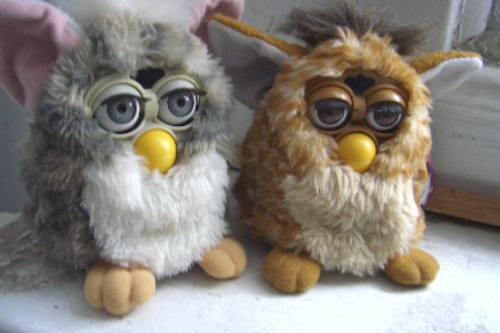
Furbies were robotic, furry creatures that made a lot of noise and required attention like a real pet. They “learned” to speak and would interact with their owners in surprising ways, like giggling or saying “I love you.” With their large, expressive eyes and quirky behavior, Furbies became a household name in the late ‘90s. At the time, they represented cutting-edge technology, merging the worlds of toys and robotics in an accessible way.
The downside? They were loud, and their constant need for attention could become annoying. Plus, the novelty wore off as the technology behind them didn’t evolve as quickly as kids expected. While Furbies were retired for a time, they’ve made a comeback in recent years, though they’re not quite the phenomenon they once were.
7. Magic 8-Ball
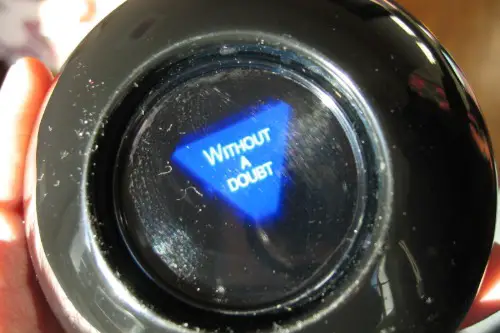
The Magic 8-Ball has a long history as a decision-making toy. Shaking the ball and reading the cryptic answer was a fun way to settle disputes or predict the future, even if it was just a silly game. Its mysterious answers, from “Yes” to “Ask again later,” fascinated kids, making it a fixture in many homes and classrooms. It wasn’t just a toy; it was part of a larger fascination with fortune-telling and mystery during the ’80s and ’90s.
As time went on, however, kids found other ways to make decisions. The Magic 8-Ball’s appeal, like many novelty toys, wore thin as kids began seeking more interactive and technological forms of entertainment. But the Magic 8-Ball still stands as a classic example of how simple toys could captivate imaginations in an unpredictable way.
8. Skip It
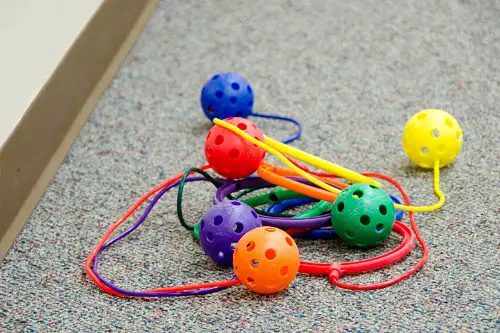
Skip It was the toy that made you jump, twist, and hop like a pro—except it also required some serious leg strength and coordination. The device was a plastic hoop that you strapped around your ankle and then skipped over with the other leg, counting how many times you could jump. Kids would race to see who could skip the most without tripping, turning it into a competitive and fun challenge. It wasn’t just a toy—it was a way to get outside and be active.
So why did Skip It disappear? Its simple concept became repetitive after a while, and as kids sought out more engaging or technologically advanced options, it faded from the scene. But for those who had one, the toy became a fond memory of carefree outdoor play.
9. Hot Wheels

Hot Wheels cars were everywhere—small, colorful, and fast, they were the perfect toy for kids who loved racing. These miniature cars came in various designs, from standard sedans to crazy, customized vehicles. Kids would build elaborate tracks, complete with loops and jumps, to race their Hot Wheels, trying to achieve the fastest time. With their small size and collectible nature, Hot Wheels also became a popular hobby for some kids, who amassed collections over time.
Despite their simplicity, Hot Wheels cars endured because they combined both the thrill of racing and the fun of collecting. Unlike other fleeting fads, Hot Wheels have managed to stay relevant, even if they’re not as dominating as they once were. In fact, they remain a staple in many toy aisles today, still bringing joy to both new and nostalgic generations.
10. Slap Bracelets
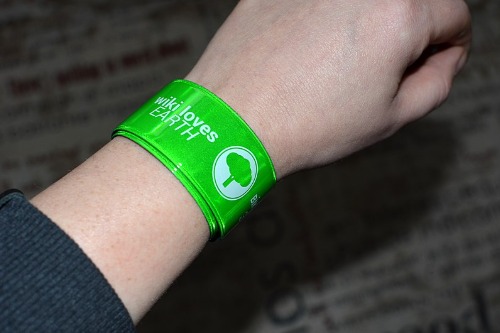
Slap bracelets were the perfect blend of fun and fashion, offering a unique combination of a toy and accessory. You would slap them against your wrist, and they’d instantly form a perfect bracelet shape. These colorful, bendable bracelets were a huge hit during the ‘90s, offering an easy way to accessorize while satisfying a tactile craving. Kids loved the sensation of slapping them on, and they came in a variety of colors, making them highly collectible.
Despite their popularity, slap bracelets were eventually pulled from stores due to safety concerns. The metal inside could sometimes poke through the fabric, posing a risk of injury. This led to their decline, though the memory of slapping those bracelets on your wrist remains a nostalgic one for many.
11. Yo-Yos

Yo-yos were not only a classic toy but also a skill-based challenge that kept kids entertained for hours. Learning tricks like “Walk the Dog” or “Rock the Baby” gave a sense of accomplishment and sparked friendly competition. Yo-yos have a long history but surged in popularity again in the ‘80s and ‘90s, when they were marketed as both a toy and a way to develop fine motor skills. As simple as it was, the yo-yo’s endless trick possibilities made it a favorite in schoolyards.
Even though yo-yos never truly disappeared, their mainstream appeal faded as newer toys came along. The rise of digital gadgets and video games took kids’ attention away from physical toys. However, yo-yo enthusiasts still exist, and competitive yo-yoing remains an underground hobby for those who love its precision.
12. Nerf Guns
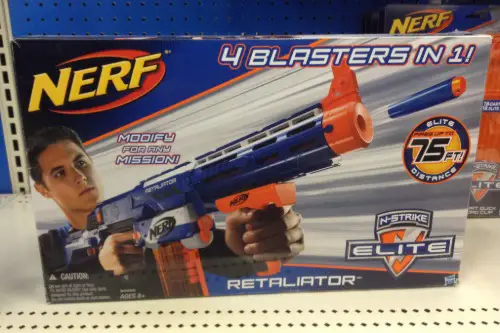
Nerf guns were the ultimate choice for mock battles and friendly competitions, with foam darts flying in every direction. Whether it was a classic rifle or a new, more elaborate blaster, kids would spend hours engaging in battles and perfecting their aim. The appeal of Nerf guns lay in their ability to provide safe yet exciting combat scenarios, making them perfect for group play. Plus, Nerf always kept things fresh by introducing new designs, keeping kids coming back for more.
While Nerf guns have never truly disappeared, their prevalence in children’s lives fluctuated over time. As other video game-based or electronic toys grew in prominence, Nerf took a backseat for a while. But today, Nerf is still strong, with the brand continually evolving to incorporate new features like motorized blasters and themed sets.


